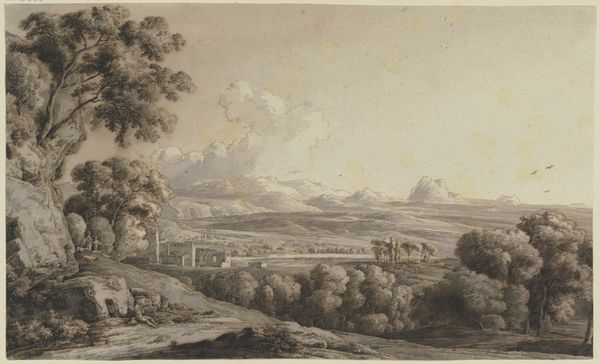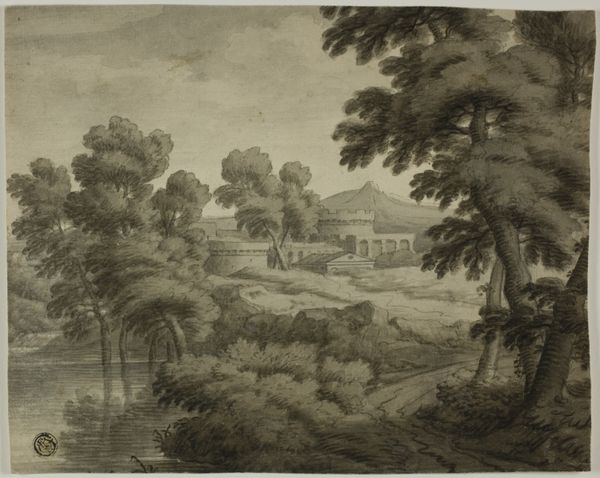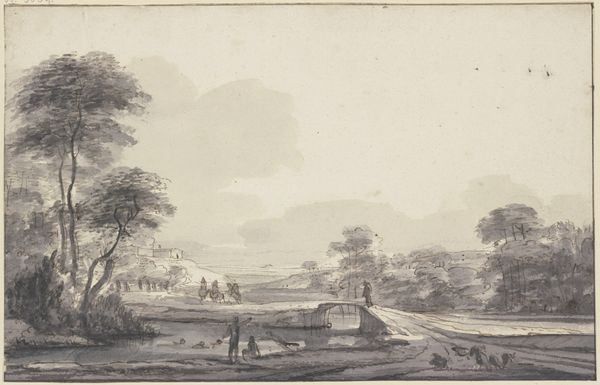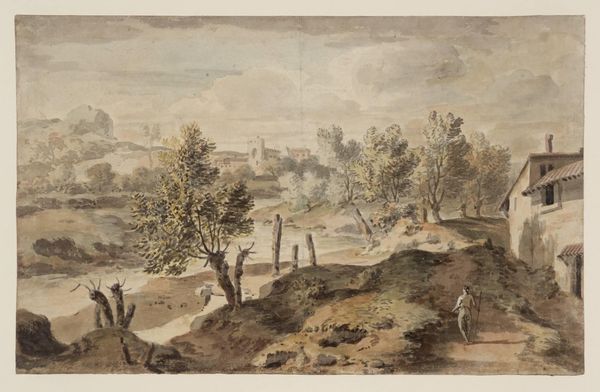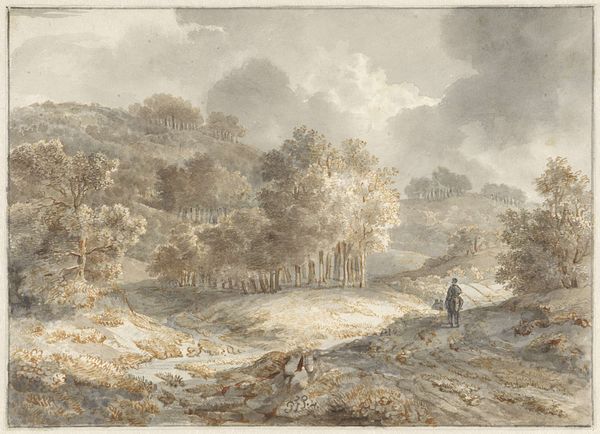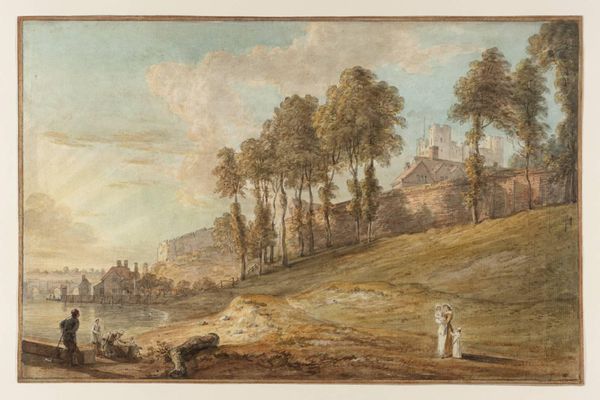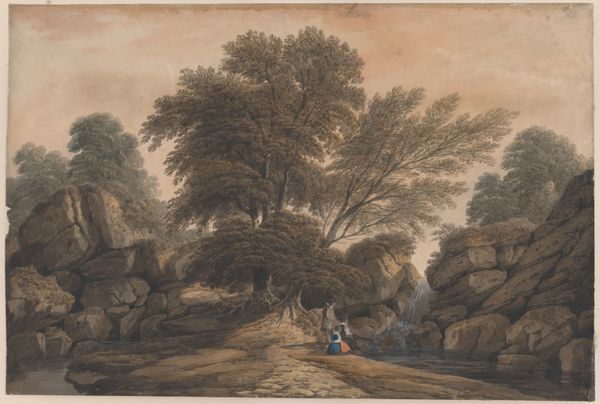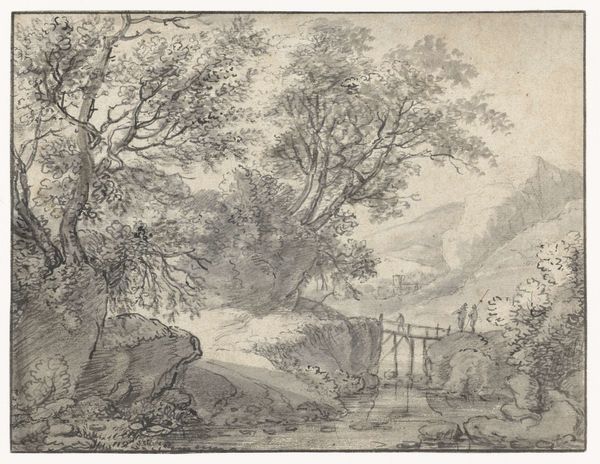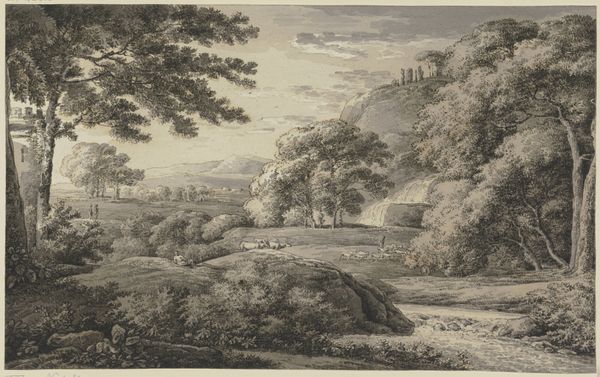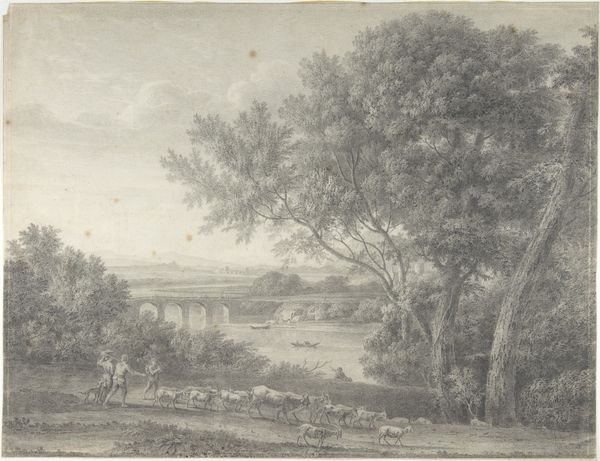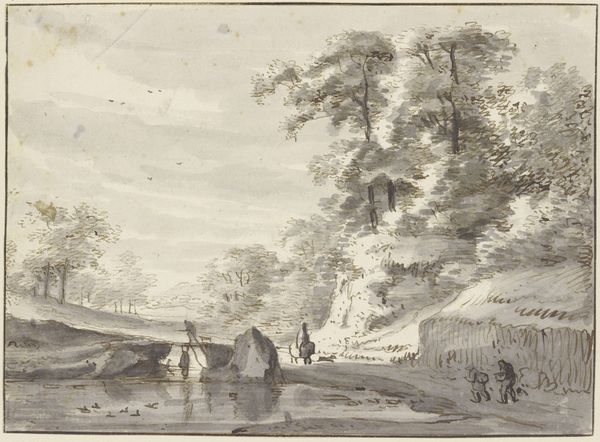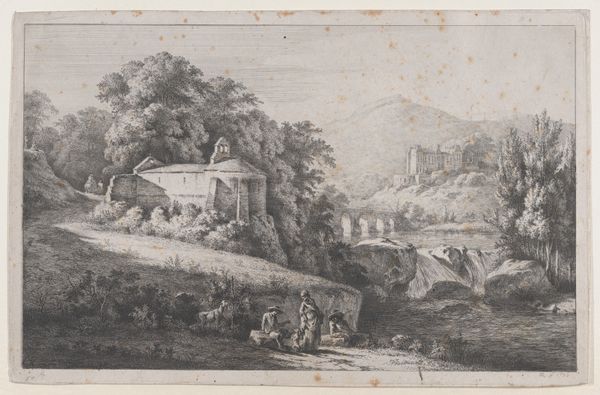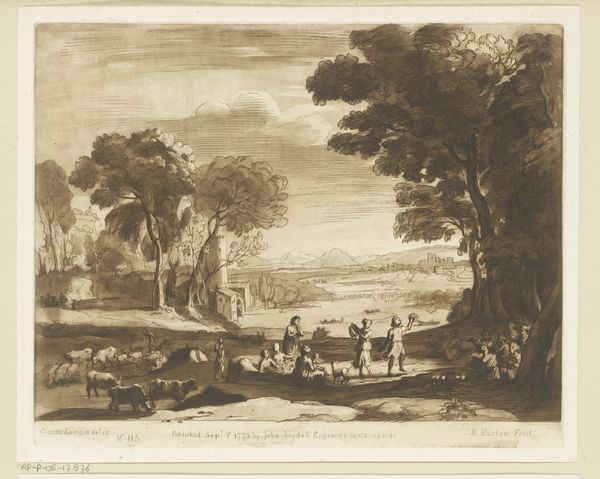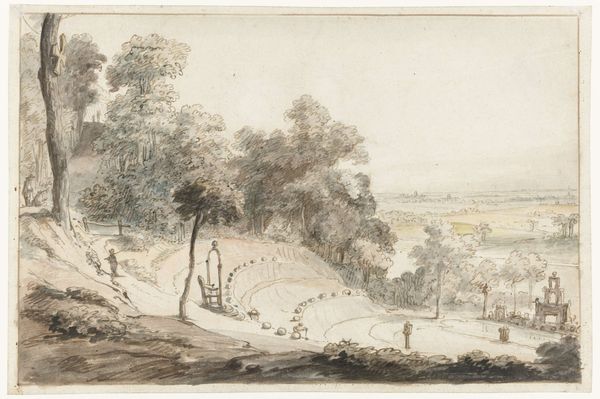
drawing, print, watercolor
#
drawing
# print
#
landscape
#
figuration
#
watercolor
#
romanticism
#
cityscape
#
miniature
#
watercolor
Dimensions: (sight): 10 1/4 x 12 in. (26 x 30.5 cm)
Copyright: Public Domain
Curator: Oh, look at this, the "Park Landscape with Strolling Figures." It’s an intriguing nineteenth-century watercolor, currently residing at The Met. There’s also a print aspect to it as well. It definitely feels miniature, even whimsical. Editor: It gives off such a dreamy feeling. Almost ethereal. It’s hard to put my finger on why. Is it the palette? That kind of misty, overcast sky? Or perhaps the scale makes the people feel smaller? Curator: I find it interesting how these cityscapes adopted landscape painting's principles to represent the evolving social ideals. It is quite a striking reflection of romanticism too. The arrangement of people seems like careful choreographies. Editor: Exactly! It's fascinating to think about parks during this period becoming stages for social performance. Places to see and be seen. This idea resonates deeply as this becomes a prominent fixture of art later on in Manet. Curator: I am intrigued by how even anonymous figures take on the collective memories. The repetition of motifs, such as these bridge architectures, the small figurine sculptures above— it all comes to define what one envisions the nineteenth century would embody, which makes art of the era almost a prediction. Editor: And don’t you think this artistic representation influences people’s understanding of the real social issues? These landscape images created this almost utopian ideal, while urban reality was much more challenging. I suppose such a contrast could be an essential catalyst in understanding what that world really needed, the need for beauty. Curator: An important point. As those idealized scenes, with their meticulously strolling figures, shaped desires, which then were shaped by society back in return—this is the image we are left with. A legacy of idealized publicness in urban spaces. Editor: Ultimately, even the absence of detail makes room for so much speculation about that period’s consciousness. A reminder that the past, especially how we envision it, is very much alive within us.
Comments
No comments
Be the first to comment and join the conversation on the ultimate creative platform.
